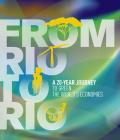This book explores the potential contribution of a particular public policy - variously called environmental tax reform (ETR), environmental fiscal reform (EFR) or green fiscal reform (GFR) - to reconciling economic growth and the environment.
In 2013 and 2014 Green Capital’s major two-year project, Sustainable Economic Frontiers, is exploring and analysing a dynamic, fast-evolving and diverse field, from a distinctively Australian perspective. Simultaneously there is a growing wave of bottom-up civil society, local government and business action aimed at delivering more sustainable and resilient communities and enterprises. The aim of the report is to conduct an initial highlevel overview, ahead of deeper investigation of what is on offer, and to promote dialogue about the ideas and the trends that are taking shape.

This publication provides an analysis of the 20 year history of the Global Environment Facility (GEF). The aim is to document the ongoing evolution of the GEF and its approaches to biodiversity conservation, development, sustainability, climate change mitigation and adaptation, land degradation, pollution control and other areas of concern, by exploring in detail some of the most salient experiences of the past two decades at the GEF. The publication consists of an analysis of 20 select projects that illustrate the key lessons learned.
This summary was prepared by Eldis.
This paper discusses the extent to which the predicted growth of aviation in a carbon-constrained world is possible given the known operational and technological options, and in particular the extent to which aviation biofuels form part of the answer. Even without a carbon constraint, aviation faces significant challenges. If capping global greenhouse gas emissions remains a serious goal, then aviation‘s problems intensify. With these challenges in mind, some fundamental questions are raised, for instance:
Greening Development: Enhancing Capacity for Environmental Management and Governance outlines a number of steps to be considered when building capacity for greening national development planning, national budgetary processes and key economic sector strategies. It identifies the key actors to be engaged in the decision making processes, outlines possible capacity needs and suggests how these can be addressed. The cyclical approach being advocated in the report reflects a shift from the traditional view of capacity development as a purely technical process to one that recognises the importance of country ownership at different levels in governments and society
Improving the environmental performance of agriculture is a high priority in OECD and many non-OECD countries. This will be of increasing concern in the future given the pressure to feed a growing world population with scarce land and water resources. Policy has an important role to play where markets for many of the environmental outcomes from agriculture are absent or poorly functioning.
This study focuses on the design and implementation of environmental standards and regulations, taxes, payments and tradable permit schemes to address agri-environmental issues. It deals with the choice of policy instruments and the design of specific instruments, with the aim of identifying those that are most cost-effective in very different situations across OECD countries.
Key conclusions from the study are that: there is no unique instrument that promises to achieve all agri-environmental policy goals; the cost effectiveness of payments systems could be improved by using performance-based measures; and policy mixes need to combine policy instruments that complement and not conflict with each other
Information and communication technologies (ICTs) and the Internet are increasingly viewed as a vital infrastructure for all sectors of the economy. Already, employment in the ICT industry and employment of ICT specialist skills each accounts for up to 5% of total employment in OECD countries and ICT intensive-users account for more than 20% of all workers. In addition, the emerging "green" economy is a "smarter" economy that has increased demand for ICT-skilled jobs not only in the ICT sector, but more rapidly across the wider non-ICT economy. The further creation of new jobs can only occur, however, if the right mix of skills and competences are available in the labour market. Shortages of required ICT-related skills have been observed in some OECD countries, and this is particularly true for skills related to green ICTs.
This document sets out a framework for evaluating the implementation of environmental provisions in Regional Trade Agreements. The checklist approach to the evaluation of countries‘ experience of implementation complements the OECD‘s Checklist for Negotiators (2008). Among the issues addressed are institutional arrangements, co-operation, capacity building, public participation, resolution of differences and assessment.
We see the expression “sustainable development” everywhere these days, but what does it mean? Can we really pursue sustainable economic growth without harming our societies and the environment? And if we pursue prosperity today, are we condemning our children and grandchildren to poverty tomorrow?
The OECD works on many issues related to sustainable development – climate change, growth in developing countries, corporate social responsibility and much more. Using straightforward language and real-world examples, OECD Insights: Sustainable Development draws on that expertise to explore these vital issues.
OECD Insights: Sustainable Development provides an essential introduction to the complex relationships between the economy, society and the environment. As global inequality and climate change become mainstream concerns, it asks the questions our generation needs to ask in terms everyone can understand.
Why were participant countries in the Rio+20 conferences (2012) not able to find any common ground on the role of intellectual property rights (IPRs) as they sought to identify a path for achieving “green economy” in the decades ahead? The current policy brief seeks to answer this question by examining the evolution of the global debate on IPRs and green technologies from the Earth Summit in 1992 to Rio+20.
The document indicates that:
